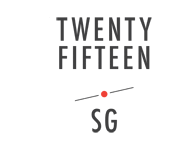The Gift Book
One origin of the practice of gift-wrapping can be traced back to the furoshiki, a reusable wrapping cloth used to transport clothes, gifts and other goods during the Edo period in Japan. The ritual of gift-wrapping we know today has a completely different intention. Perhaps it is the look of surprise we hope to see when the recipient tears open the wrapper, or the air of mystery and desire that is created when we are given an unknown object.
In 1992, Professor Daniel Howard from Southern Methodist University in Dallas, USA published a study on the effects and motivations of gift-wrapping. He wrote, “gift wrapping, through repeated pairing with joyous events in people’s lives, has utility in cueing a happy mood which, in turn, positively biases attitudes”. This confirmed his hypothesis that a gift-wrapped item makes the recipient more favourable towards owning a gift.
Our natural environment is both the giver and the gift. But we, the recipients, have to appreciate and conserve it so that it can continue to give us the crucial resources we need to live. To celebrate this fact, here are 15 gift-wrapping paper designs created with various elements from our natural environment. They include insects, butterfly chrysalises and flowers – specimens that either flew into my home, or that I found in my garden or collected in and around Singapore. They say that to give is to receive, so I hope these gift-wrappers will positively bias you and your intended recipient’s attitudes towards our natural world.
Ernest Goh
Singapore
2014

